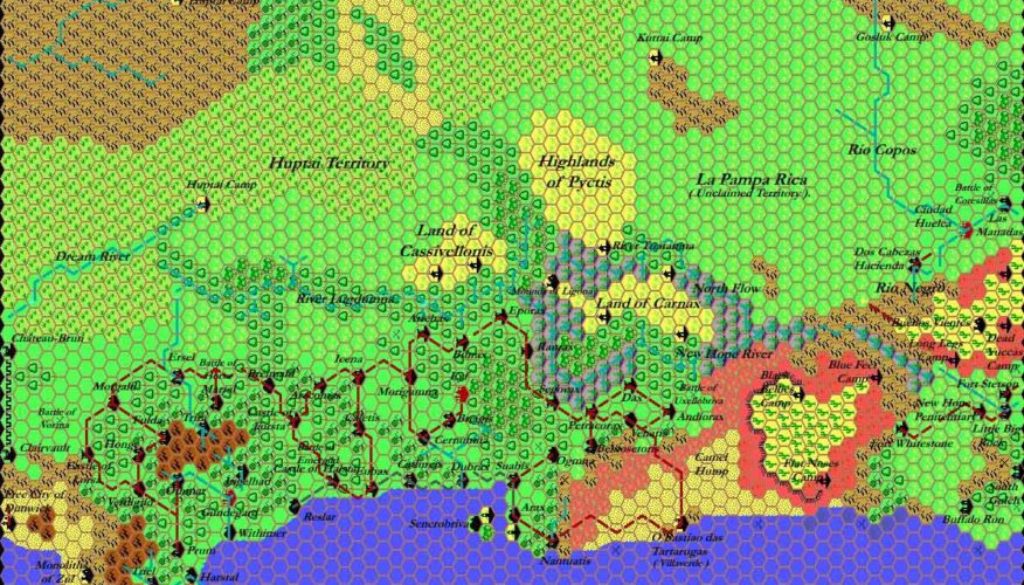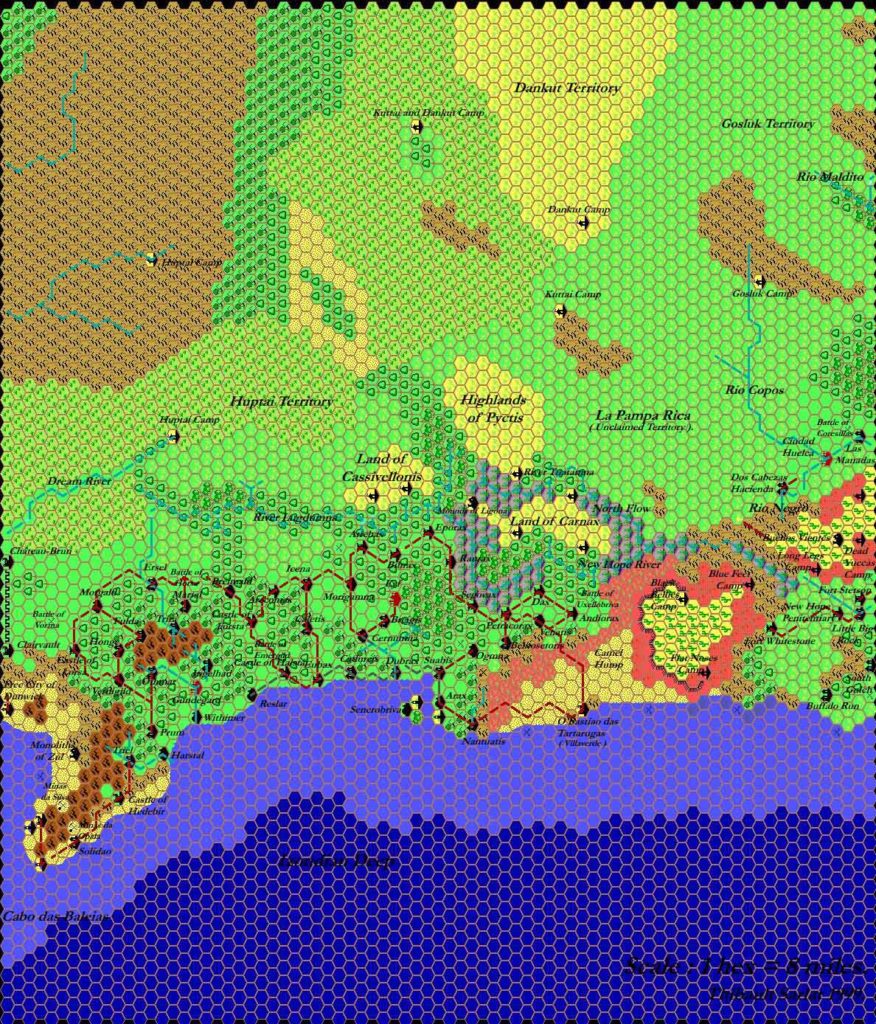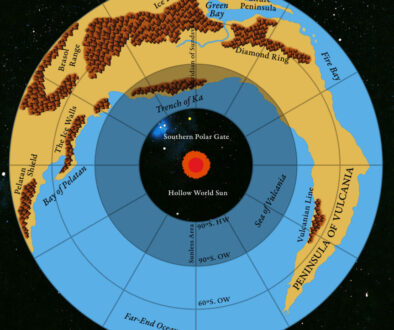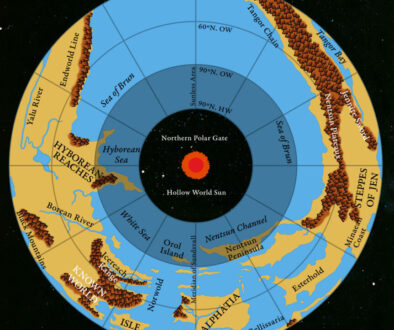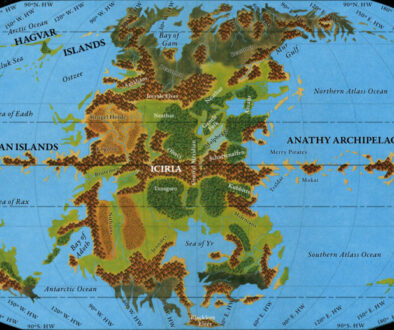Thibault’s Robrenn and Eusdria, 8 miles per hex
A few weeks after posting his first sample map, Thibault began releasing a series of full maps of the Savage Coast region. Split into four pieces, it would eventually cover all the regions detailed in the Voyage of the Princess Ark series, as well as adding information from Red Steel. Adding the terrain from Red Steel was a major advance for hex maps of this area, as the original maps did not have a hex grid. Thibault was the first to do this.
The first two parts came in June 1999. This one covers the east central Savage Coast, from the borders of Renardy to the edge of Cimarron County.
As with the Renardy map, the style is characteristic of Thibault’s early maps. For more commentary on this, see the post for that map.
Fan-made Map by Thibault Sarlat (June 1999)
This is an original map created by one of Mystara’s excellent fan cartographers. For more information on the cartographer, including a gallery of all their maps, see also Appendix M: Mappers of Mystara.
Sources
- The Voyage of the Princess Ark Part 23: Shoutout at South Gulch, Dragon 176 (December 1991)
- The Voyage of the Princess Ark Part 24: The lords of the forest, Dragon 177 (January 1992)
- The Voyage of the Princess Ark Part 25: Of blood and steel, Dragon 178 (February 1992)
References
- All of Thibault’s maps at the Atlas of Mystara
- Thibault’s entry in Appendix M: Mappers of Mystara (upcoming)
- Thibault’s author page at the Vaults of Pandius
Chronological Analysis
This is a fan-made map. It was published in 1999. The updated Atlas version of this map is not yet available. See also Appendix C for annual chronological snapshots of the area. For the full context of this map in Mystara’s publication history, see the upcoming Let’s Map Mystara 1999. (Please note that it may be some time before the project reaches this point.)
The following lists are from the Let’s Map Mystara project. Additions are new features, introduced in this map. Revisions are changes to previously-introduced features. Hex Art & Fonts track design elements. Finally, Textual Additions are potential features found in the related text. In most cases, the Atlas adopts these textual additions into updated and chronological maps.
Coming Soon

